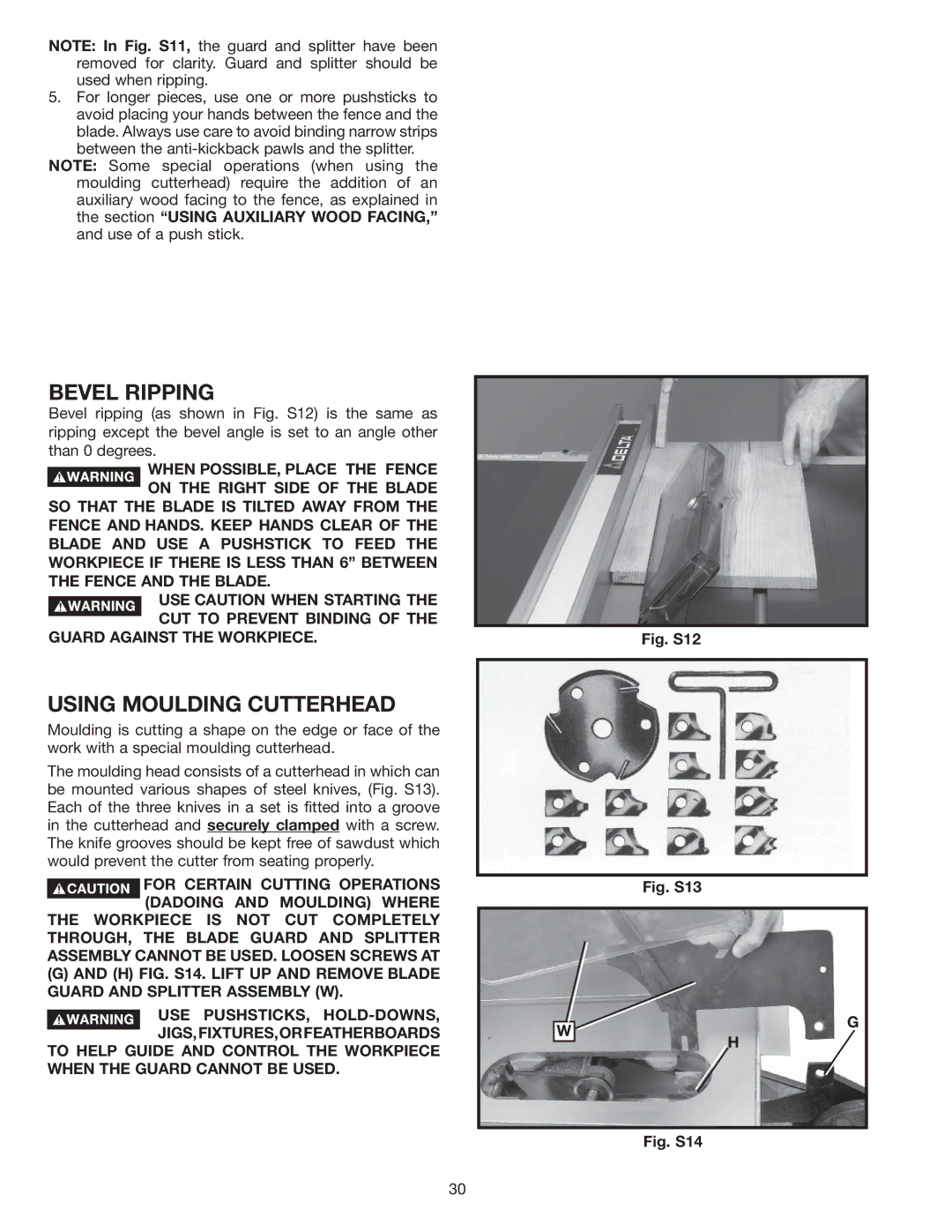
NOTE: In Fig. S11, the guard and splitter have been removed for clarity. Guard and splitter should be used when ripping.
5.For longer pieces, use one or more pushsticks to avoid placing your hands between the fence and the blade. Always use care to avoid binding narrow strips between the
NOTE: Some special operations (when using the moulding cutterhead) require the addition of an auxiliary wood facing to the fence, as explained in the section “USING AUXILIARY WOOD FACING,” and use of a push stick.
BEVEL RIPPING
Bevel ripping (as shown in Fig. S12) is the same as ripping except the bevel angle is set to an angle other than 0 degrees.
WHEN POSSIBLE, PLACE THE FENCE
ON THE RIGHT SIDE OF THE BLADE SO THAT THE BLADE IS TILTED AWAY FROM THE FENCE AND HANDS. KEEP HANDS CLEAR OF THE BLADE AND USE A PUSHSTICK TO FEED THE WORKPIECE IF THERE IS LESS THAN 6” BETWEEN THE FENCE AND THE BLADE.
USE CAUTION WHEN STARTING THE CUT TO PREVENT BINDING OF THE
GUARD AGAINST THE WORKPIECE.
USING MOULDING CUTTERHEAD
Moulding is cutting a shape on the edge or face of the work with a special moulding cutterhead.
The moulding head consists of a cutterhead in which can be mounted various shapes of steel knives, (Fig. S13). Each of the three knives in a set is fitted into a groove in the cutterhead and securely clamped with a screw. The knife grooves should be kept free of sawdust which would prevent the cutter from seating properly.
![]()
![]()
![]()
![]() FOR CERTAIN CUTTING OPERATIONS (DADOING AND MOULDING) WHERE THE WORKPIECE IS NOT CUT COMPLETELY
FOR CERTAIN CUTTING OPERATIONS (DADOING AND MOULDING) WHERE THE WORKPIECE IS NOT CUT COMPLETELY
THROUGH, THE BLADE GUARD AND SPLITTER ASSEMBLY CANNOT BE USED. LOOSEN SCREWS AT
(G)AND (H) FIG. S14. LIFT UP AND REMOVE BLADE GUARD AND SPLITTER ASSEMBLY (W).
Fig. S12
Fig. S13
USE PUSHSTICKS,
W
G
TO HELP GUIDE AND CONTROL THE WORKPIECE WHEN THE GUARD CANNOT BE USED.
H
Fig. S14
30
